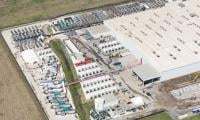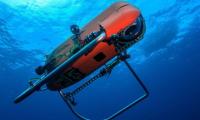CPEC: some facts
This article is in response to the article, ‘CPEC’, by Dr Farrukh Saleem, October 08, 2017). Here are some facts regarding the China-Pakistan Economic Corridor.
Fact 1: There exists a joint institutional framework between China and Pakistan regarding decision-making for CPEC. The framework consists of a Joint Cooperation Committee (JCC) followed by five Joint Working Groups for each sector, with experts and political representation from provinces and the federation.
There is a well-established procedure for initiating a project and signing any contract. All the line ministries undertaking implementation of projects are bound to follow these standard operating procedures. Any project or agreement that is initiated under CPEC has to be approved by the Central Development Working Party (CDWP) and the Executive Committee of National Economic Council (ECNEC). The thorough approval process determines the scope and cost estimates of any initiative which is then taken up with the Chinese side after the approval by the cabinet.
This holistic approach has been in practice since the start of CPEC. The objections regarding the approval process are based on ignorance of these facts. The notion that Pakistan’s decision-makers who approve and sign contracts under CPEC have little or no business interests in Pakistan is false.
Fact 2: It is untrue that only Chinese workers have been hired on CPEC projects. Chinese companies have engaged Pakistani engineers and workers in large numbers. Chinese citizens involved in the early harvest projects amount to 8,000 to 9,000. The projects in power and infrastructure sectors have created more than 30,000 direct job opportunities for Pakistanis.
Furthermore, there are a number of CPEC power and infrastructure projects which are being implemented by a consortium of Chinese and Pakistani companies. With the advent of CPEC, the construction industry in Pakistan witnessed a boom as a majority of Chinese companies are relying on local cement, steel and raw material suppliers. In the next phase, in the case of the Pakistan Railways Mainline One (ML-I) project, technology transfer is an integral part of the contracts as training for local staff as well as joint manufacturing are distinguishing features of the arrangements under discussion.
Facts 3 & 4: The finances of CPEC are not limited to loans only. The projects in the energy sector are being executed in the IPP mode – a policy of the government of Pakistan for the last 15 years. For the entire energy portfolio, finances will be arranged by Chinese companies, mainly from Chinese banks, against their own balance sheets. They will service the debt from their own earnings without any obligation on the part of the Pakistani government. Nepra has not given unusually high tariff to any IPP investor under CPEC.
The projects in the infrastructure sector and Gwadar are implemented through government concessional loans, interest-free loans and Chinese grants. On average, a 2 percent interest has to be repaid over a period of 20-25 years in such projects. This amount’s debt servicing will create a very minimum burden on Pakistan, compared to the benefits.
Facts 5, 6 & 7: Under CPEC, China is providing concessional finances to build our infrastructure. For such projects, China nominates a panel of three well-reputed companies from which Pakistan selects the lowest bidder. This procedure is not unique to CPEC as most of the international credit agencies are following the same guidelines for concessional finances. It is a universal practice that in case of international ECPF projects funded by Exim Banks and/or export credit agencies, the competition is among the companies of the financing country. There is competitive international bidding in the case of CPEC also, as these Chinese companies are international companies active in different continents and are listed on the stock exchanges in most of the cases.
Facts 8 & 9: Pakistan has announced an incentive package to develop its industrial sector under CPEC, a practice common all across the globe. Tax breaks are given to a large number of economic actors in any country; both local as well as FDI. These incentives are not limited to the Chinese but open to all, with the objective to develop trade and industry in Pakistan, which remain the main gain from CPEC and a driving force for economic growth.
Fact 10: Nine Special Economic Zones (SEZs) are being planned in all the provinces and regions of Pakistan. These SEZs will cater to the relocation of a labour-intensive industry from China to Pakistan and recreate millions of jobs across the country. In these SEZs, business opportunities will be equally available to all Pakistani businessmen, to the Chinese and to other foreign investors. Pakistan’s synergy with foreign investors will surely enhance intra-industry trade in textile and other sectors under CPEC.
CPEC will increase Pakistan’s GDP by 2-3 percent. It is overcoming our crucial energy, transport infrastructure and supply chain bottlenecks. It will create more than half a million jobs as estimated by the ILO. The development of Gwadar will ensure the strengthening of the maritime sector. The development of the agriculture sector will pave the way for food security. Industrialisation under CPEC is expected to lead to improvement in export performance and ensure sustainable economic development.
The linkages made through CPEC are improving human resource and transfer of knowledge and technology. They are also helping establish new urban centres in the country, thus leading towards true inclusive development. The impacts are visible from the fact that Pakistan is transforming into a better place for foreign investors; countries including the UK, France, the Central Asian Republics, and Gulf States are eager to become part of this game-changer project.
The writer is the director of media CPEC at the Ministry of Planning.
Email: shaukatkhattak@gmail.com
-
 Queens Mother Arrested After Abducting Child From Court-ordered Visit
Queens Mother Arrested After Abducting Child From Court-ordered Visit -
 Sarah Ferguson Ready To ‘spread Her Wings’ After Separating From ‘disgraced’ Andrew
Sarah Ferguson Ready To ‘spread Her Wings’ After Separating From ‘disgraced’ Andrew -
 Finn Wolfhard Shares How Industry Views Him Post 'Stranger Things'
Finn Wolfhard Shares How Industry Views Him Post 'Stranger Things' -
 Dylan O'Brien Gets Nostalgic After Reunion With Old Friend
Dylan O'Brien Gets Nostalgic After Reunion With Old Friend -
 UK Doctors Warn Screen Time Is Harming Children’s Health
UK Doctors Warn Screen Time Is Harming Children’s Health -
 Meghan Markle To Get Police Protection In UK If Travelling With Archie, Lilibet
Meghan Markle To Get Police Protection In UK If Travelling With Archie, Lilibet -
 Spencer Pratt Expresses Hope For Taylor Swift, Travis Kelce's Wedding Invite
Spencer Pratt Expresses Hope For Taylor Swift, Travis Kelce's Wedding Invite -
 Evan Peters Makes Unexpected Confession About 'American Horror Story' Season 13
Evan Peters Makes Unexpected Confession About 'American Horror Story' Season 13 -
 Kentucky Grandmother Arrested After Toddlers With Broken Skulls, Ribs
Kentucky Grandmother Arrested After Toddlers With Broken Skulls, Ribs -
 European Space Agency Hit By Cyberattack, Hundreds Of GBs Data Leaked
European Space Agency Hit By Cyberattack, Hundreds Of GBs Data Leaked -
 Elon Musk’s XAI Launches World’s First Gigawatt AI Supercluster To Rival OpenAI And Anthropic
Elon Musk’s XAI Launches World’s First Gigawatt AI Supercluster To Rival OpenAI And Anthropic -
 Google Adds On-device AI Scam Detection To Chrome
Google Adds On-device AI Scam Detection To Chrome -
 First Ocean Robot Launched To Monitor 'Category 5' Hurricanes
First Ocean Robot Launched To Monitor 'Category 5' Hurricanes -
 Gwyneth Paltrow Gets Honest About Filming Intimate Scenes With Timothee Chalamet
Gwyneth Paltrow Gets Honest About Filming Intimate Scenes With Timothee Chalamet -
 Duke's Peace Talks With King Charles, Prince William: 'Ball Is In Harry's Court'
Duke's Peace Talks With King Charles, Prince William: 'Ball Is In Harry's Court' -
 New Research Finds Back Pain May Disrupt Men’s Sleep Quality Later In Life
New Research Finds Back Pain May Disrupt Men’s Sleep Quality Later In Life



